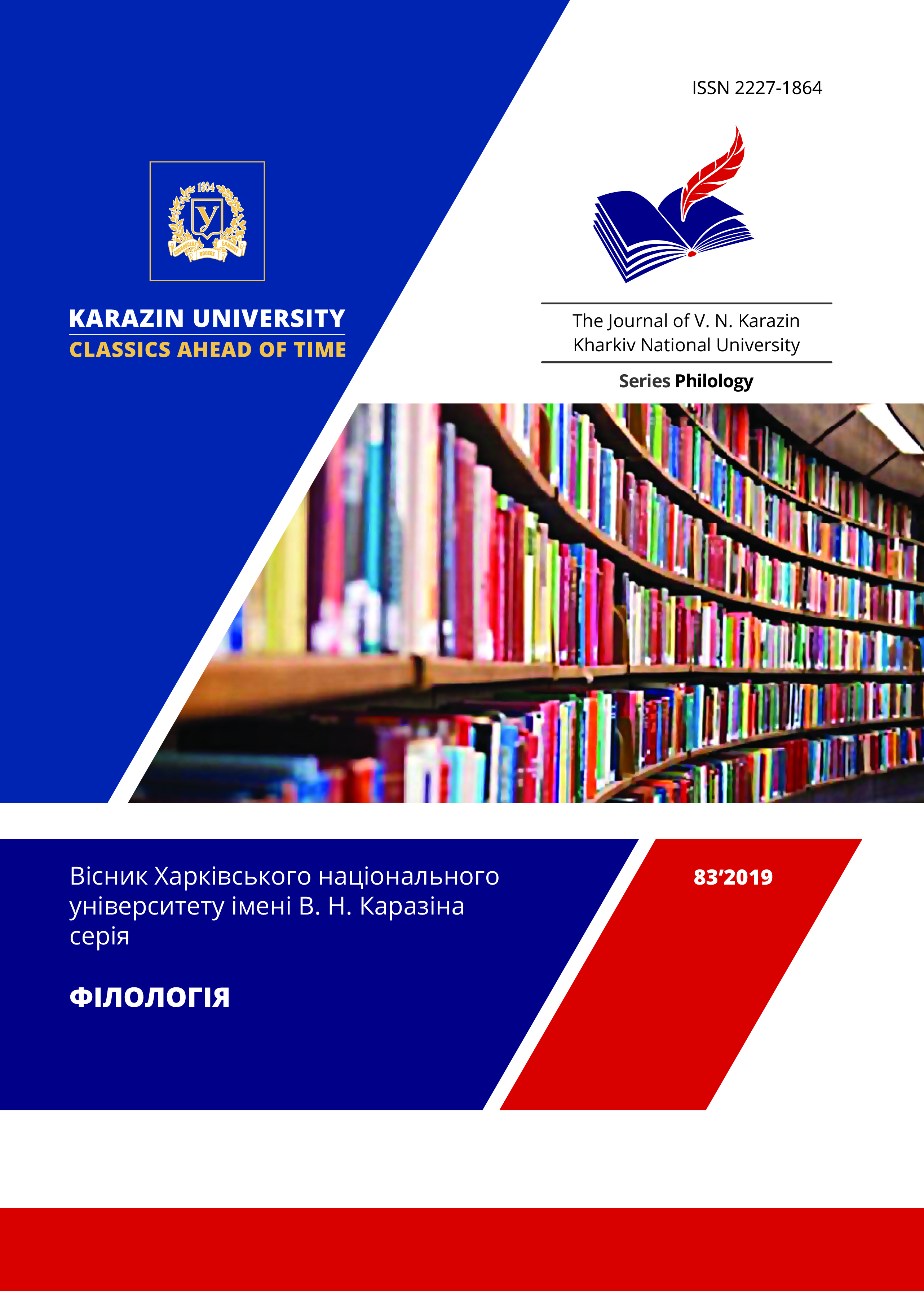Типології оповіді англо-американської наративної школи
Анотація
У статті розглядається історія становлення та розвитку типологій оповіді англійських та американських дослідників ХХ століття, які залишаються актуальними і в сучасній наратології.
Під «наративними типологіями ХХ століття» науковці розуміють типологічні класифікації романного повістування, які уможливлюють розгляд і класифікацію інваріантних компонентів оповіді, наративних структур і способів їх вираження. Їхні принципи були закладені представниками англо-американської наукової школи (розроблені Г. Джеймсом, П. Лаббоком, уточнені Н. Фрідманом, У. Бутом) та отримали в науці назву «індуктивної типології техніки оповіді». Динамічний розвиток наративних теорій привів до послідуючої деталізації внутрішньо текстової комунікації і виділенню в ній двох перспектив, заявлених ще античною філософією: дієгезиса (дискурсивного аспекту повістування) і мімезиса (його візуального аспекту, показу). Так, американський науковець Норман Фрідман продовжив традицію П. Лаббока у розгляді форм романної оповіді, сконцентрувавши увагу на понятті «точки зору», запропонував ретельно розроблену систему її різновидів. Під іншим кутом зору проблему наративних форм і наратора розглядав американський філолог У. Бут, стверджуючи, що будь-яка оповідь – це одна з форм риторики, за допомогою якої автор захищає свої інтереси, таємні або явні, зумовлюючи реакцію читача на свій твір.
Досліджуючи на прикладах відомих романів категорії присутності / відсутності розповідача в історії, яка розповідається і його зовнішньої / внутрішньої позиції щодо неї, представники англо-американської наукової школи розробити детальну типологію романних оповідних форм в аспекті «точки зору» та «голосу» оповідача, що стало їхнім головним здобутком в наратології. Зазначена типологія плідно використовується в сучасних наукових студіях наративу та його форм, поширившись від лінгвістики та літературознавства до психолінгвістики, прагматики, соціолінгвістики, когнітивістики, гендерних досліджень та ін.
Завантаження
Посилання
Il'in, I.P. (2001) Il'in Ilya. Postmodernizm: slovar' terminov [Ilyin I.P. Postmodernism: a dictionary of terms]. Moskau : INION RAN - INTRADA. [in Russian]
Booth W.C. (1961) Wayne C. Booth. «Distance and Point-of-View: An Essay in Classification». Essays in Criticism. Chicago and London : The University of Chicago Press. [in English]
Booth W. C. (1961) Wayne C. Booth. The Rhetoric of Fiction. Chicago and London : The University of Chicago Press. [in English].
Friedman N. (1975). Norman Friedman. Form and meaning in fiction. Athens : The University of Georgia Press. [in English].
Friedman N. (1967). Norman Friedman. Point of view in fiction // The theory of the novel. Ed. by Stevick Ph. N. Y., pp. 108-139. [in English].
James H. (1884). Henry James. The Art of Novel // Published in Longman’s Magazine 4 (September 1884), and reprinted in Partial Portraits (1888). [in English].
Lubbock P. (1957). Percy Lubbock. The craft of fiction. London: Filiquarian Publishing. [in English].




